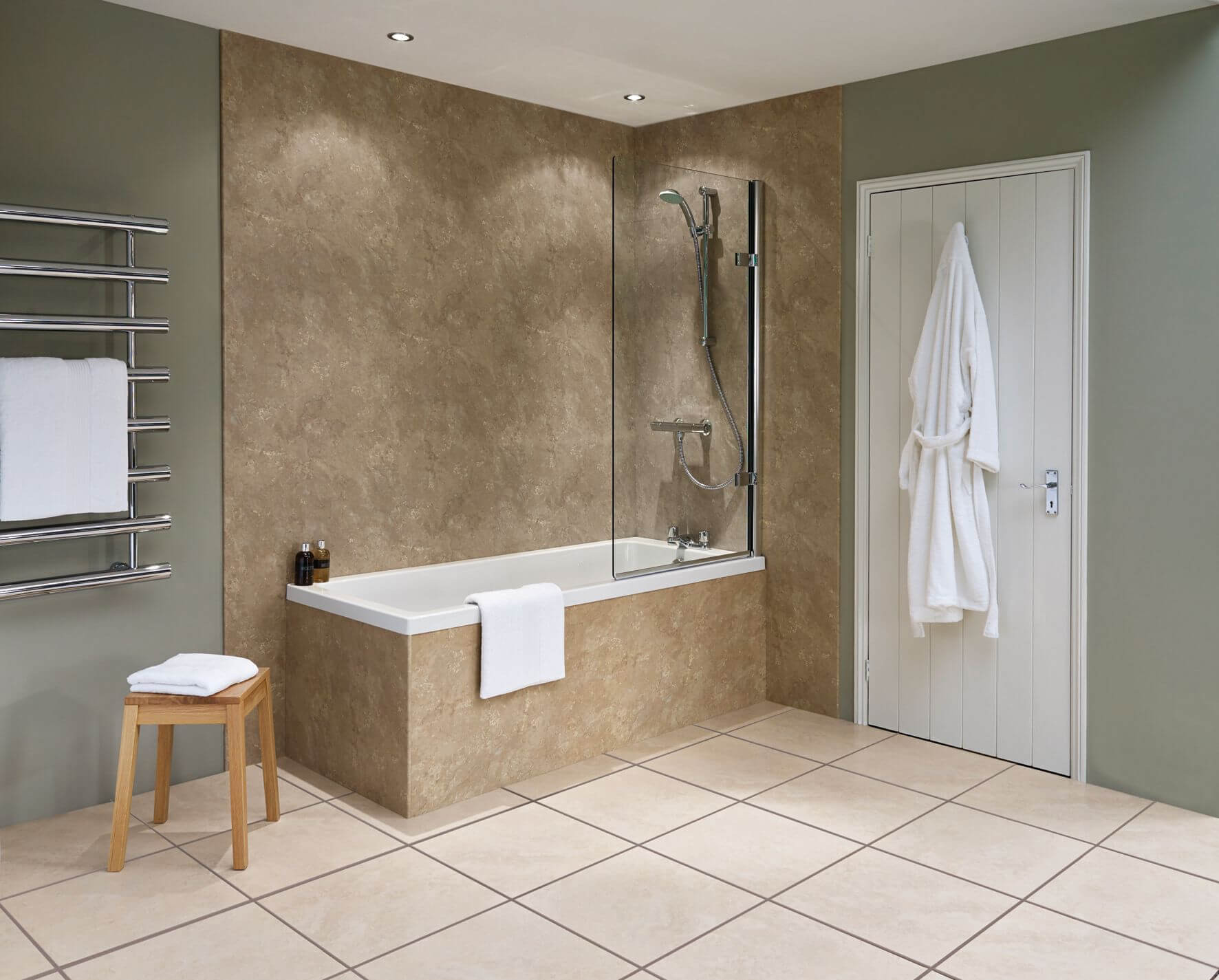Tileboard Materials and Styles
:max_bytes(150000):strip_icc()/best-bathroom-wall-surfaces-1821359-09-09ea8dcb40124743a9165099d906516b.jpg)
Tileboard for bathroom walls – Tileboard, a popular choice for bathroom walls, offers a wide range of materials and styles to suit various preferences and needs.
Transform your bathroom walls with durable and stylish tileboard. Its water-resistant surface and easy maintenance make it an ideal choice for humid environments. Enhance the ambiance with coloured glass candle holders , casting a warm and inviting glow. Complete the look with matching tileboard accessories for a cohesive and elegant bathroom design.
Materials
Tileboard is typically made from three primary materials:
- PVC (Polyvinyl Chloride): PVC tileboard is lightweight, durable, and moisture-resistant. It is also relatively easy to install and comes in a variety of colors and patterns.
- Acrylic: Acrylic tileboard is more durable than PVC and offers a glossy, high-end finish. It is also resistant to scratches and fading, making it a suitable choice for areas with high traffic.
- Fiberglass: Fiberglass tileboard is the most durable and expensive option. It is highly resistant to water and damage, making it ideal for bathrooms with heavy use.
Styles
Tileboard comes in a variety of styles to complement any bathroom design:
- Subway Tile: Classic and timeless, subway tile features rectangular tiles arranged in a staggered pattern.
- Marble Look: Marble look tileboard mimics the luxurious appearance of natural marble, offering a sophisticated and elegant touch.
- Wood Grain: Wood grain tileboard brings warmth and character to bathrooms, creating a cozy and inviting atmosphere.
Design Considerations for Tileboard Bathrooms

Creating a visually appealing and cohesive tileboard bathroom requires careful consideration of design elements such as tileboard size, shape, grout color, and pattern. These factors can significantly impact the overall aesthetic and functionality of the space.
Choosing the Right Tileboard Size and Shape
The size and shape of tileboard can influence the perceived size and style of the bathroom. Smaller tileboards create a more traditional look, while larger tileboards can make the space feel more modern and spacious. The shape of the tileboard can also affect the overall design, with rectangular tileboards being a classic choice and square tileboards adding a more contemporary touch.
Importance of Grout Color and Pattern
The color and pattern of the grout can complement or contrast with the tileboard, adding visual interest and depth to the design. Darker grout colors can create a bolder look, while lighter grout colors can blend in more seamlessly with the tileboard. The pattern of the grout can also vary, with staggered or offset patterns adding a touch of visual interest.
Creating a Cohesive Tileboard Bathroom Design
To create a cohesive tileboard bathroom design, consider the following tips:
- Use a consistent tileboard size and shape throughout the space.
- Choose a grout color that complements or contrasts with the tileboard.
- Experiment with different grout patterns to add visual interest.
- Accessorize with towels, rugs, and other bathroom fixtures that match the overall design scheme.
Installation and Maintenance of Tileboard: Tileboard For Bathroom Walls
:max_bytes(150000):strip_icc()/best-bathroom-wall-surfaces-1821359-05-7fd30f288c7743e78870f81222b90fe1.jpg)
Tileboard installation and maintenance are crucial for ensuring its durability and aesthetic appeal in bathroom environments. This section provides a comprehensive guide to installing and maintaining tileboard, addressing the necessary tools, materials, techniques, and cleaning and repair strategies.
Installation of Tileboard, Tileboard for bathroom walls
Installing tileboard involves several steps, each requiring specific tools and materials. Before starting, ensure you have the following:
- Tileboard panels
- Trim pieces (moldings, corner trims, etc.)
- Adhesive (specifically designed for tileboard)
- Caulk
- Level
- Measuring tape
- Utility knife
- Caulk gun
Follow these steps for successful tileboard installation:
- Prepare the Walls: Clean and dry the bathroom walls to remove any dirt, dust, or debris. Ensure the walls are smooth and level.
- Measure and Cut Tileboard: Measure the wall area where the tileboard will be installed and cut the panels to fit. Use a level to ensure straight cuts.
- Apply Adhesive: Apply a thin layer of adhesive to the back of the tileboard panels using a notched trowel. Press the panels firmly onto the walls, aligning them evenly.
- Install Trim Pieces: Cut and install trim pieces around the edges of the tileboard, such as baseboards, corner trims, and crown moldings. Secure them with adhesive or nails.
- Caulk Joints: Apply caulk to all joints between tileboard panels and trim pieces. Smooth the caulk using a wet finger or caulk tool.
The water-resistant and durable tileboard for bathroom walls comes in a variety of colors and styles to complement any décor. And with antique bathroom wall light , you can add a touch of timeless elegance to your bathroom. The warm glow of the antique light will create a relaxing and inviting atmosphere, perfect for unwinding after a long day.
